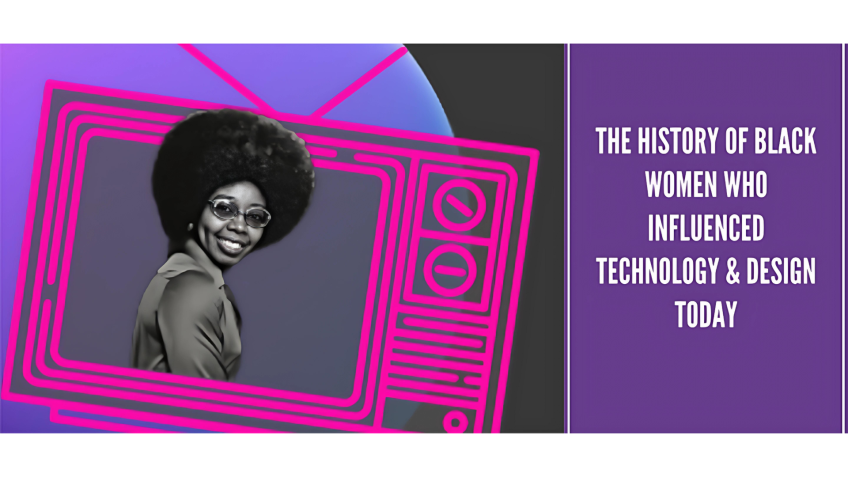Practical tips for inclusive design in your prototypes and demos by Clare Warburton
Embracing Inclusive Design: A New Perspective in Technology
Welcome to another insightful session! Today, we’re diving into the captivating world of inclusive design. I am Claire Warburton, a tech veteran working for over two decades in the industry. Currently, I am working with Pega Systems, a US-based low-code software company.
For the next few minutes, we'll be exploring the critical need for inclusive design and practical ways to implement it in the technology you create. So, without any further delay, let's get started!
Understanding Inclusive Design
Inclusive design, in essence, addresses a wide range of factors: accessibility, age, culture, economic situation, education, gender, geographic location, language, and race. It goes beyond convergence and fosters a sense of understanding and acceptance. When designing a product, it's just as important to consider those who are excluded as it is to focus on those included.
Inclusive Design: Why Does It Matter?
Striving towards inclusion has immeasurable benefits. Although achieving 100% inclusivity could be challenging, the effort is worth it. Inclusivity is a vital key to building trust and fostering robust and long-lasting relationships, especially within a sales environment. Always remember to make design decisions with an audience in mind – this is the first step towards inclusive design.
Pillars of Inclusive Design
There are five points I’m covering today: accessibility, age, gender, race and culture. Let’s delve into each component:
- Accessibility: Although often overlooked in demos and prototypes, accessibility should always be at the forefront of design considerations. Always consider how format, text-size, color contrast, and the medium of your demo could be perceived by your audience.
- Age: Generational diversity is a reality in the workforce, and it should be reflected in your design. Younger and older people should both feel represented.
- Gender: Balance in the portrayal of genders prevents bias and maintains authenticity. Always maintain equal prominence to male and female characters in your designs.
- Race: Same as age and gender, race must be equally represented in your designs. It’s a vital aspect of inclusive design to maintain racial diversity, ensuring no one feels excluded.
- Culture: Be mindful of cultural references and symbols in your design. It’s always better to avoid region-specific icons or imagery, especially if your audience is diverse.
Implementing Inclusive Design in your Prototype
While inclusive design may seem a bit challenging initially, the positive implications it brings to your brand and user-experience are worth the extra effort. To ensure you’re hitting the mark, keep the following points in mind:
- Learn: Understand your audience’s backgrounds, passions, and trigger-points. This helps you focus your design more effectively.
- Plan: Keep in mind the different groups within your audience – parents, veterans, Christians, Muslims, people using accessibility aids, etc. – during the planning phase.
- Design: Implement decisions you've taken in your planning phase. This is when your understanding of your audience comes into play.
Closing Thoughts on Inclusive Design
Inclusive design is more than just a designing trend – it is a necessity. Our responsibility as designers is to lower the barriers and create designs that welcome, value and make people feel safe. By making your design truly inclusive, you can foster trust, build relationships, and ultimately, make a difference in the end-user experience. So, venture forth and embrace inclusive design!
Thank you for joining me in exploring the exciting world of inclusive design. Let’s strive to make technology truly inclusive, one design at a time!
Video Transcription
So welcome to the session and thanks for joining. Um I am really happy to spend the next sort of eight minutes with you all. Um My name is Claire Warburton and I've been working in technology since around 1999 so probably a bit more than 20 years.Um I'm currently living in Spain and I'm working for Pega Systems, which is a US based um low code software company that sells two enterprises. Um So in my day to day, I create demos and prototypes for sales teams and I manage a global team of UX designers and front end uh developers. And today I wanted to talk about inclusive design. So OK. Oh, see, that's the problem. I think it, sorry, I can't go back. So uh OK, sorry about this. Wait, I'm trying to break my mouse's back. What is inclusive design? Um So this pretty much sums it up. Uh It addresses accessibility, age, culture, economic situation, education, gender, geographic location, language, and race.
Um So this can be applied to your application, your product or you know, your life really. Um I find it helpful to think not just of inclusion but also of exclusion. So think, you know, thinking about who you're including, but also who are you excluding um when you're designing your product or your prototype? So why does this matter? Uh again, another issue with? So why does this matter? Um you know, I I don't believe that you can get to perfect on this. Um I think it's impossible to make 100% inclusive application or 100% inclusive anything but the more we think and consider it and strive towards that inclusion, then I think we're in a better place. Um So in the next eight months or so, uh no, eight minutes. So uh in the next eight or six minutes or so, um I wanted to talk to you about some simple things we can do. Um So also like why this matters? Sorry again, this is my timing being off. Um So it's really about belonging and that belonging, bring, bringing that trust and that trust is building relationships, which is like so crucial for your demo and your prototype and anything in the sales environment is creating that relationship.
So who's in the audience? Um Before I get into specifics? Um Like anything we uh when we build anything we build or design, the first thing you you need to do and consider is use the audience for that demo of that application. Um So it's really the first step in inclusive design is to recognize the different groups within that audience. Um So, you know, maybe they are parents or they're divorced or they've got kids, they're veterans. You know, there are people who've had a good morning or people who have had a bad morning people, you know, Christians, Muslims, people in wheelchairs, people who don't want to be on camera. Um, but, you know, the bottom line is we actually don't really know any of that. Um And it's dangerous to assume that we do know that. So five points, I'm gonna go through today because we've only got limited time uh accessibility, age, gender, race and culture. So hopefully we'll get through it all. Uh accessibility first. So first, accessibility um for demos and prototypes, you know, typically we don't really worry too much about following, you know, all the, the strict guidelines because, you know, this is a demo environment and, and, you know, hopefully they're not going deep deep in on the code.
Um But it doesn't mean that you shouldn't consider this. Um And you know, the, the amount of impairments or limitations that the pe the folks on your, you know, the stakeholders might have. Um So it's important to consider the format and the medium of your demo. Um You know, in the environment I work in, we're often presenting these things like on a screen like this in a remote uh kind of atmosphere. But increasingly uh we're starting to do this now in conference rooms where you've got like long tables and a, a screen at the end. So, you know, we might present a screen like this, which is, this is part of the interface uh for PGA uh where we're showing a bit of code and a bit of um things that are going on in the background. And, you know, I'm looking at the screen right now and I can, I can read it and I can see all the text and it's quite, I mean, it's, it's not clear what's going on, but it is, it's clear to me if this was explained to me. Um but, you know, you just have to think about what this would look like to someone in a conference room who's sitting at this chair at the end here and they're just completely unable to see that.
So this is just something to keep in mind uh while you're building your demos and the same with color contrast. Um You know, I think it was fashion for a while to have sort of all these sort of layered light grays. Um And this is looks nice. Um But, and again, from this screen, I can kind of read what's going on, but as soon as you put this on a smaller screen, uh in a big conference room, you're not able to differentiate anything there that again and sorry, and you to, so there are uh varying degrees and types of color vision issues um specifically like my brother in law, he's not able to distinguish well between reds and greens.
So if they had a router issue as we all do, um the slide before I can't go back, but the slide before had, you know, the power button was green and the Ethernet one was red. Um And you can't really tell if you, if you have those problems which light is actually on. Uh So I think, you know, the designers is obviously not something that they would uh uh considered. Uh so somebody like that. But then also, you know, there's someone like me who can't like read anything close up without glasses on. So this is pretty much what I would see. Um So I wouldn't be able to tell any tech rep what was going on with my router. So, I mean, we don't typically use um these kind of traffic lights um in our demos, but we do use color coding for all kinds of other status symbols and things like that. So consider that as well. Like right now, you know, the good, the good status is, is green, which is sort of fairly typical. But, you know, we've also put the word good in there because, you know, maybe you can't read it and maybe you don't see that color. So you, you, you're, you're affording them that, that ability and OK, and next on to. So I've got like three minutes left. So I'm gonna have to go through this super fast. Uh So who are the cast of characters in your demo?
You know, we try to tell stories um in our demos. Uh So you need, need to consider this the, the diversity of the users. Um older and younger people should be represented um Because older and younger people make up the workforce. Um uh Just like women and black and brown people do generational diversity in the workforce is here to stay and it makes good business sense to foster that age inclusive culture within your demo. Um I'm just gonna move very quickly here um next into, to gender um which, you know, should be an easy one for us, right? Well, you know, maybe not. So a couple of things we shouldn't do, don't do this. Um This is from actually 2014. Um I don't know if you've seen it before, but uh it's basically, you know, what's killing about this is, this is a global summit on women. Um And there's not a single woman there. Uh So this launched a whole uh panel thing on all male panels, which is kind of interesting. Uh But, you know, this thing still happens today. Um This just happened uh in March. Uh it's not International Women's Day. It was another, you know, women's Day panel event where all the speakers were men. So just, you know, be careful because insipidly this sort of gets into your projects um in a demo story for example, you've got one like this, which is sort of very male centered.
I mean, there's, there's one woman in here um within this whole journey. So, you know, if you're starting off that way, it, I'm afraid that it's just gonna continue. Um So just think of it from the beginning. Uh finally, not finally but coming up to race. Um So similarly, if you're only including white people in your demo personas, um you're doing it wrong and immediately excluding anyone else who isn't white. Um So don't do this, you know, where we've got the whole panel of, of white people. Um don't do this. Um I'm sorry, there's actually quite a few examples of this. Uh you know, even your avatar images uh just look where that balance really counts. Um Make sure that they have rich uh backgrounds and don't put them in the backseat either and culture. Um So this is a bit harder because it's a little broader. Um But our stories and I, I don't think our stories can be universal. You can't talk to everyone and culture, you know, is a tricky one. But, you know, if, if you're using too many sports references, for example, you know, I'm just not gonna get them and a lot of people won't get them. So just be careful about what you're doing and then if you are specifically doing something uncultured, um Similarly, you know, if you're regionally presenting something to a UK audience.
Um but you're showing your whole, you know, ecommerce platform, for example, in dollars and uh with American spellings, you know, this is not going to gel and will create that uh that kind of uh mismatch of understanding and helps to, you know, eliminate that trust and then, you know, and use opportunities to, to embrace the inclusion here.
You know, this is a demo we did for our bank, but, you know, it was Pride Month. And so, hey, why not? We have this, we have this sort of announcement section which you know, many enterprise companies are, you know, celebrating pride this month. So yeah, let's just let's throw that in there. And it, it adds, I think a level of um you know, context and also understanding for the stakeholders who are seeing that demo that oh yeah, this does, this feels like my place. Um It also makes those, those LGBT people feel included and, and welcome. I was thrilled when I saw this. So this is pretty cool. Um So those are the five points I just covered super fast and I'm over time. So finally, I think, you know, just the final point here is really just to check your biases at all times. Um make a checklist if you need to and think about, you know, who you're excluding each time that you're, you're building those characters. Um You know, we want to be really important about and aware of the biases and the impact they can have and recognize the responsibility we all have to, to lower those barriers. So inclusive design makes people feel welcome, safe and valued and it prevents frustration and demeaning experiences.
It builds trust and it builds relationships and, you know, I think that's why it really matters. So, you know, thank you for speeding through this with me. Um I really appreciate it.





